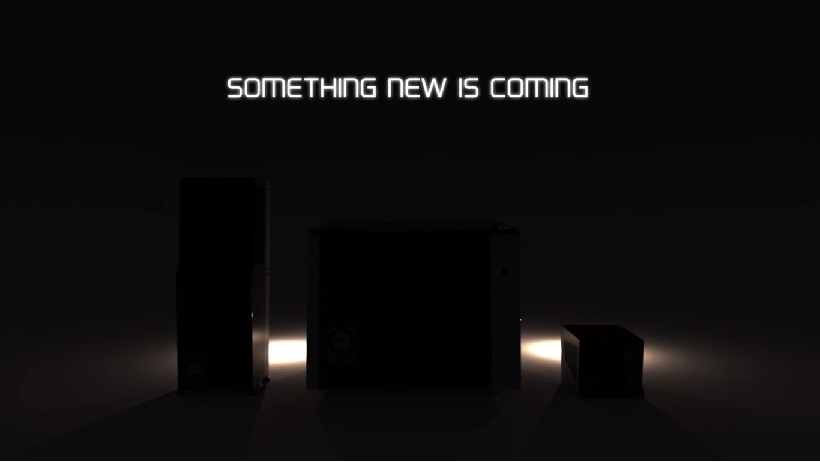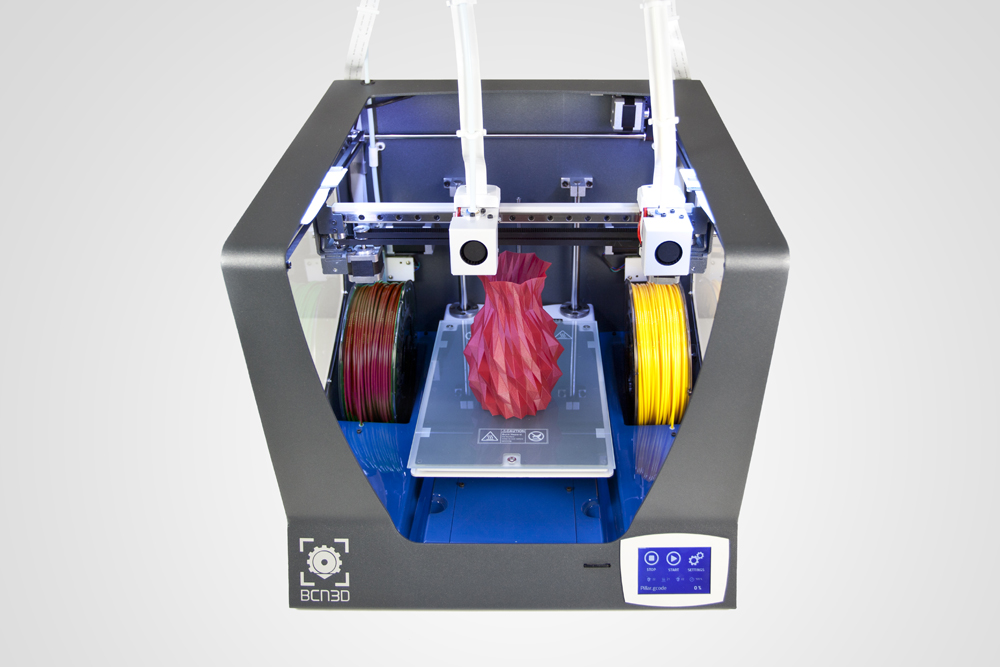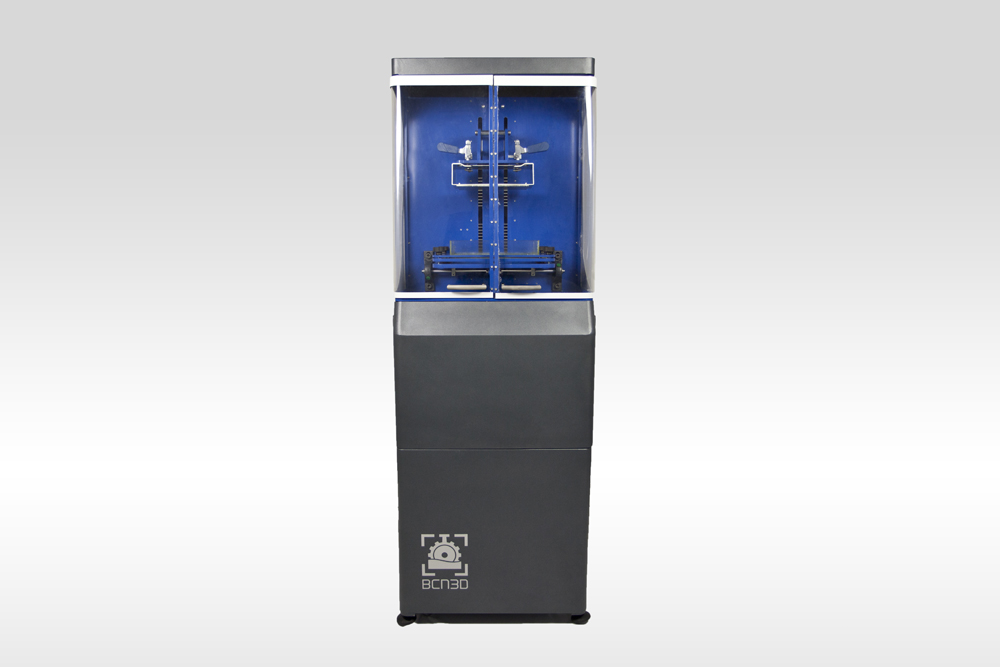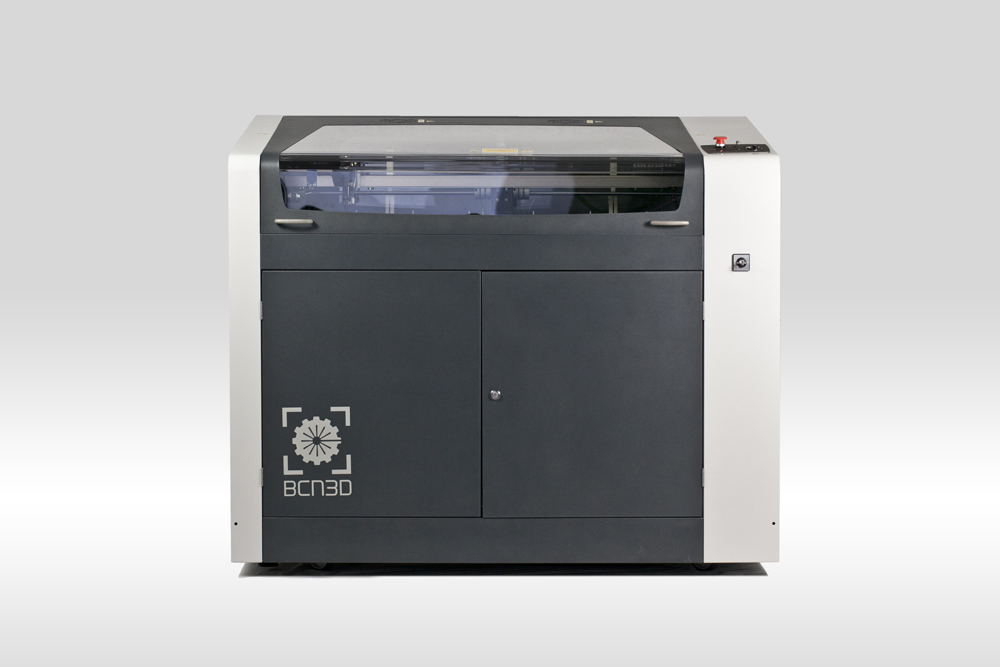What separates BCN3D Technologies as a 3D printing company is their long-standing commitment to educating everyone in 3D design, prototyping, and product development. It’s not just about building and selling high-quality open source 3D printers for them, it’s also about creating a grassroots ecosystem for Makers.
Previously named RepRapBCN, the Barcelona based company was the result of an on-going 3D printing project between Universitat Politecnica de Catalunya and Fundacio CIM (FabLabs) where they developed custom rapid prototyping equipment for 3D design and manufacturing courses. Their founder and CEO is an academic, Professor Roger Uceda, and he has spearheaded their transformation from a university 3D printing research lab and service provider to a full-fledged company with its own range of 3D printers, unique extruders, milling machines, materials, kits and spare parts, as well as a host of educational courses in 3D printing technology.
They recently launched three new machines at Barcelona’s DHUB, which they’ve been working for nearly ten months. These machines are a huge step up from their previous BCN3DR and BCN3D+ FFF 3D printers. The BCN3D+, among other features, had dual extruders and a unique paste extruder that could be configured to suit different materials, ranging from nylon or ceramics to chocolate or mashed potatoes.
Their latest FFF 3D printer, the BCN3D Sigma is capable of fusing filaments to produce high-quality multi-color 3D prints and has a slightly larger build volume than the BCN3D+. It has a 50 micron layer resolution and, more importantly, the system has independent dual extruders (IDEX) including the Bowden Quick Release extrusion system for higher quality prints, especially topcoats.
Their next 3D printer, the BCN3D Lux, uses a different 3D printing technology – Digital Light Processing (DLP). This would be BCN3D’s first DLP 3D printer and, as with the others, it has been produced under the Open Hardware concept, which, as they say, is “an open manufacture philosophy that allows knowing exactly how the machines works, because all the information about the functioning and the design is under Open Source license, totally free and available for the public.” It has quite a large build volume at 250 X 140 X 300 mm and has a 250W 1080p full HD projector to cure its photosensitive resins.
Their third release isn’t a 3D printer, but a laser cutting machine meant for professional or industrial use. The BCN3D Ignis uses a 100W CO2 laser to cut materials like plastic, wood, leather or fiber. It has a huge manufacturing volume of 900 X 600 X 300 mm for high-precision cutting, marking, or engraving. You can explore each of these three new machines here.
Along with these machines, BCN3D also introduced their learning program 3D Training, which is a combination of design courses, 3D printing workshops, and product development projects. Their business is as much about developing 3D printers and associated machines as it is about educating people. As their mission states, “Nowadays, is not enough just to supply the society with 3D printers. BCN3D Technologies, looking towards future, intends to transform the consumer society in which we are living since beginnings of XX century into a maker society, which could develop its own ideas, involving everyone to be an active part of the participative technologies. A procedural change with which people make their own tools and projects, merging different kinds of digital manufacture technologies in order to obtain products that, in other terms, would not being able of materializing.”
The Spanish company’s unusual business proposition, half 3D printing products, half 3D printing education stemming from their close association with academic courses and university research labs, could lower the entry barrier for those uninitiated in 3D technologies, and could create a much wider pool of certified and skilled 3D printing users.






